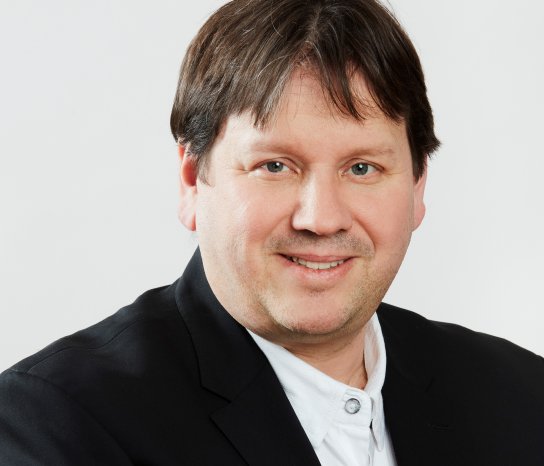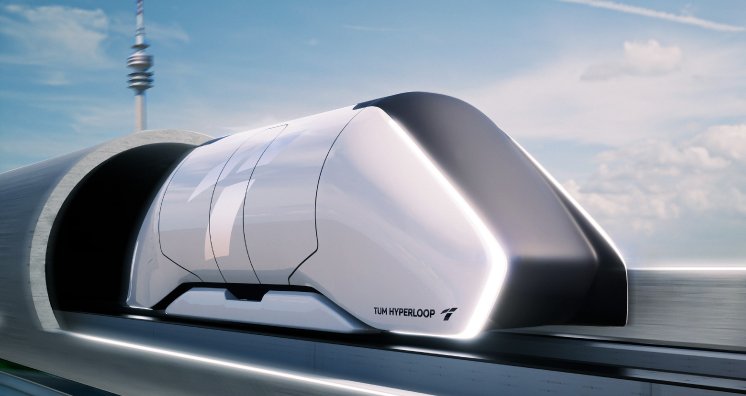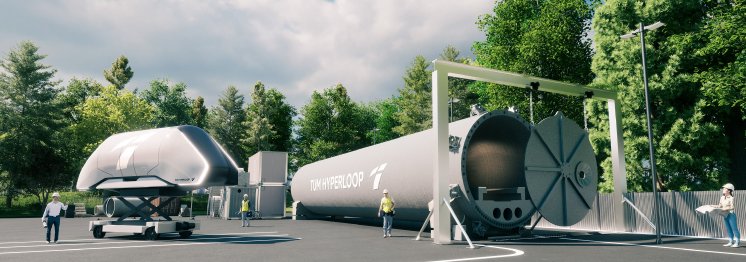Peter Lieber, Founder and Managing Director of SparxSystems Central Europe: "We are delighted to support this exciting and forward-looking project with free Enterprise Architect licences. Especially in such complex, high-tech and safety-critical systems, it is essential to use modelling to precisely document the traceability from the system requirements to the implementation. We hope, of course, that the students will then pass on their modelling knowledge to the companies, which are all urgently looking for such expertise."
Professional modelling tool urgently needed
Due to the complexity of the overall system, the TUM Hyperloop team consists of various sub-teams that deal with the mechanics, the concrete tube or the electronics. Demicoli's team is working on a microcontroller for the magnetic levitation control. "In our sub-team, we concentrate on the infrastructure for the levitation system, the inverter or, for example, communication with the outside world. Our train is comparable to the Transrapid system, only it travels in a concrete and vacuum tube. At the same time, it must also be able to communicate with the outside world, which of course poses great challenges."
The team initially used a non-commercial product in their project to create the UML diagrams for the documentation. "However, since we all want to work with professional tools that we will also find in practice after graduation, I researched and very soon came across the widely used Enterprise Architect. We quickly found that creating diagrams in Enterprise Architect is very intuitive and the different diagram types are also well explained," Demicoli explains. The expectations of the tool were initially very high and should cover the entire documentation up to code generation. Although this is possible in principle, it requires a lot of experience in dealing with the methods, processes and Enterprise Architect used.
Further exchange of knowledge about Enterprise Architect is desired
Since old and proven components (PLC system, microcontroller with C++ programming) are used in the processed magnetic levitation control system, there were also clear restrictions. "So we worked our way into Enterprise Architect step by step, first creating an overview model and then going into more and more detail. The system documentation that emerged in this way was also crucial for us, as we often work with changing people in the team." Compared to the competitor projects, the real project is much more complex and the modelling helps to always maintain an overview.
Enterprise Architect was used in the project for over eight months and all diagrams were ultimately completed. In the meantime, however, the team has become so well acquainted with Enterprise Architect that they would like to learn more about it and its further fields of application for the Hyperloop programme. Therefore, an exchange of experiences with SparxSytem's CE has now begun, the outcome of which is still open.
About TUM Hyperloop
Founded in 2020 out of a student initiative, the TUM Hyperloop programme is working intensively on a novel way of travelling on land at unprecedented speeds. The construction of the full-scale 24-metre test track now takes the project from model scale to real scale. In addition to the tube, which is made of ultra-high-strength concrete, a test capsule with magnetic levitation technology is also to be built that can transport passengers. The TUM Hyperloop test segment is the first European test field of its kind and is specifically intended to research the feasibility of passenger transport. In addition, the scalability of the entire system is to be examined, including the vacuum technology and the entire drive system. The aim of the project is to build a reference route for the Hyperloop system over several stages by the end of the decade, in which passengers can be transported at around 850 km/h. The project will also be used to test the feasibility of the entire system.
https://tumhyperloop.com/





